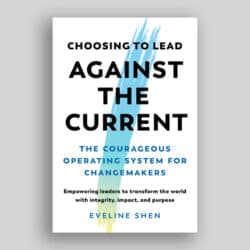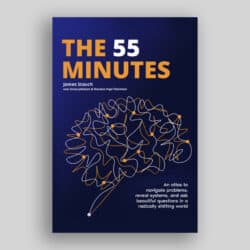Putting Wealth to Work: Philanthropy for Today or Investing for Tomorrow?, by Joel L. Fleischman. PublicAffairs. New York, New York, 2017, ISBN: 9781610395335
Joel Fleischman is the director of the Center for Strategic Philanthropy and Civil Society at Duke University. He is one of the most respected scholars of philanthropy in the US and the fact that he worked directly in the foundation sector (he spent 10 years as a staff member of Atlantic Philanthropies before its founder, Charles Feeney, made the decision to spend down) gives added credibility to his voice.
His latest book, Putting Wealth to Work, is principally a discussion of the merits and the weaknesses of both time-limited and perpetual foundations. As I started reading the book, I fully expected that the author’s conclusion would lead to a clear pronouncement that those looking at establishing time-limited foundations were making a mistake and that setting up foundations in perpetuity was always the best way to go. Well, it’s not entirely that black or white in the eyes of Fleishman.
While he is eloquent on his preference for multi-generational family foundations, and this for a variety of reasons that I will highlight later, he does a good job of articulating that, in the right circumstances and with the right factors in play, the “giving while living” approach can actually have merit.
While this may not be an entirely new debate, the author sees the move to a “giving while living” approach in the 1990s as a seismic shift in the world of philanthropy. The fact that there are more dollars than ever before (and it would seem that in the next 20 years or so, some $500 billion will be coming into the philanthropic sector) and the reality that the profile of philanthropists is changing fast (much younger and often related to world of tech entrepreneurs from Silicon valley and elsewhere) help explain this shift.
But the book offers much more than a discussion of time-limited versus perpetual foundations. It is actually an excellent review of some of the key trends in US philanthropy since the 1990s. And while the book is about American philanthropy and foremost for an American audience, it does resonate with our context here in Canada as well. Some of the trends may have taken longer to appear or develop here, but they are now very much part of our philanthropic landscape. Hence the relevance of the book for Canadians, and I would add in particular for those interested in family foundations.
The book is divided in three parts, entitled: Changing Landscape of American Philanthropy; Brief History of Limited Life Foundations and Time-Limited Giving; and Is it Better to Give now or Later?
In the first section, the author describes new trends that have developed over the last 25 years. He talks about foundations wanting to be much more focused in their areas of interest, about moving away from receiving unsolicited requests for funding, and about being more intentional about data, measurement, and impact assessment.
And, it’s often about concentrating on more solvable problems, to the detriment of the really challenging ones. In short, it’s about foundations trying to get the “biggest bang for their buck” while striving to be more strategic in the hope of being more impactful.
Fleischman also writes of the increasing realization by those involved with foundations that influencing public policy is crucial for impact (there is also a growing awareness of this in Canadian foundations). Interestingly, in his epilogue, Fleischman actually calls upon progressive foundations to become more adept and intentional at influencing public policy and learning from right-wing foundations that he believes have long been much more skilled at this.
In his description of trends, there is very little mention of impact investing as a key and complementary tool for an increasing number of foundations. When he does mention it, it is in a slightly derogatory fashion, critiquing the fact that it is essentially the product of business schools. Whether we agree that impact investing is worthwhile or not, I found it odd that there would be so little said about one of the most important trends in the world of foundations in recent years.
In the second part of the book, he becomes the historian of philanthropy in the US. I certainly found this part captivating and quite helpful to anyone who wants to better understand the role of foundations in American society.
In this section, he explains how the debate around perpetual foundations is not a new debate. While it may have resurfaced in the ‘90s, heated debates were already ongoing in France, Germany and England in the 18th and 19th centuries! These included pronouncements by key thinkers of the time, such as John Stuart Mill. That was certainly news to me.
As part of this history lesson, he talks at length of Andrew Carnegie and reminds us that, in the early 20th century, Carnegie through his “Gospel of Wealth” was already speaking eloquently of the benefits of time-limited foundations. It was quite fascinating to read how ahead of his times Carnegie was, not only on this point but on current trends such as supporting social entrepreneurship and dabbling in venture philanthropy.
Having described the major trends in the last 30 years, and having given us an interesting history lesson on philanthropy, Fleischman finally moves on to a fuller discussion on the pros and cons of spending down in the book’s third part section.
In it, he describes the generational differences in motivation for proponents of “giving while living.” For the younger generation, it stems from their experience as entrepreneurs (often in the tech sector) and with venture capital, and from their belief that big things can be accomplished in short order with the right resources and skill sets. After all, that has been their experience in business.
And this experience fuels their impatience and energizes them to want to get things done. With such a mindset, creating a foundation in perpetuity is somewhat of an abomination.
For the older generation, however, the desire to spend down is less related to business experience (although there is some of that) than to a fear that future generations won’t have their same dogged resolve to get things done and that their intentions will likely be ignored or misunderstood. There is real fear that future trustees will stray from mission, create bureaucracies, and lack vision and drive.
Three other key motivations to spend down, irrespective of age, that Fleischman describes relate to the deep desire to address urgent social, health, or environmental issues. For many, some of these issues simply can’t wait and must be dealt with now. So, for these people, investing in these issues, in massive ways and in a shorter time period, is the way to go. Secondly is a belief that spending today will have huge ripple and exponential effects for generations to come. And finally, for some, there is a fear of burdening future generations with causes for which they may have no, or little, interest.
While Fleishman doesn’t agree with these reasons to spend down, he actually does a very good job in articulating them and giving credible voice to those who believe in “giving while living.”
Indeed, he goes on to advise on those factors that should be in place if the decision is to go this route. His advice can be summarized as follows: be extremely focused on the issue or challenge that you are trying to address; right-size the problem so that the goal is attainable in a given period of time; and make sure that all the resources are clearly aligned. He believes without employing these three in tandem, attempts to truly transform things will fail.
But, he is at his most articulate when he speaks of the “why” of foundations in perpetuity and when describing the value that these have made and will continue to make to American society.
He writes of the importance of the long haul if the expectation is to truly address large social issues and challenges. That, he says, can’t be done in a lifetime.
And related to this, he argues for the importance of taking the time to learn over many generations, about what works in philanthropy and what doesn’t. This is a craft that needs to be learned and refined over generations, and foundations in perpetuity are ideal models to continuously learn and improve. He makes a compelling case about the importance of testing and experimenting and explains that by definition this takes time – time that the spend-down approach simply does not provide. He writes of the power of the “chain of knowledge.”
Moreover, he adds that foundations in perpetuity are in essence the social sector’s investment banks. An interesting and useful concept, which becomes even more true if you take into account the growing impact investing work of foundations (oddly though, as stated above, Fleischman speaks little of impact investing).
A strength of Fleishman’s book is his use of multiple examples to demonstrate his thinking throughout. In a way, you could say that this book could have been much shorter (perhaps a lengthy journal article) and made the same points. But that would have deprived the reader of some very useful stories that demonstrate, quite convincingly, that there are solid reasons for setting up of foundations in perpetuity. These are examples that are truly helpful to anyone considering setting up such a foundation, as well as for those family foundations that have been in existence for a few generations but are always in search of advice and counsel. At the same time, he provides interesting examples that demonstrate that time-limited foundations often miss their mark.
This is a very well written book, by an author who is often opiniated but who clearly understands the US philanthropic sector. It comes at an opportune time, a time when we are increasingly hearing about the virtues of giving while living and of time-limited foundations. Most often, in my experience at least, these statements and assertions are simply not based on any data or on any concrete and substantial examples. Therefore they lack much credibility. The debate is a good one to have. But if we are going to have it, let’s try to anchor it in knowledge and evidence. Putting Wealth to Work illustrates how this can be done. Fleischman’s book makes a very helpful contribution to this important debate, which is not about to go away.


